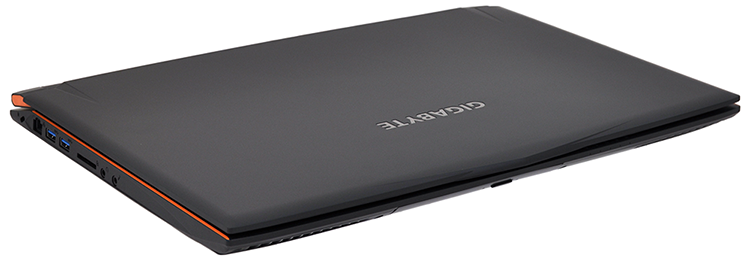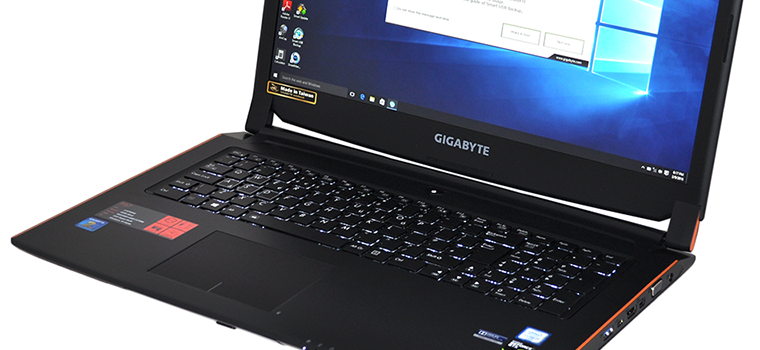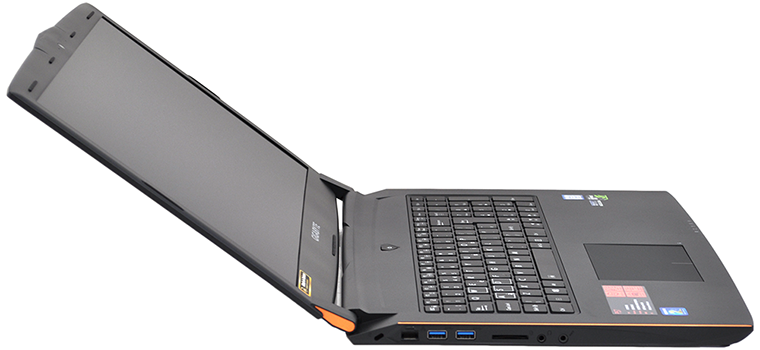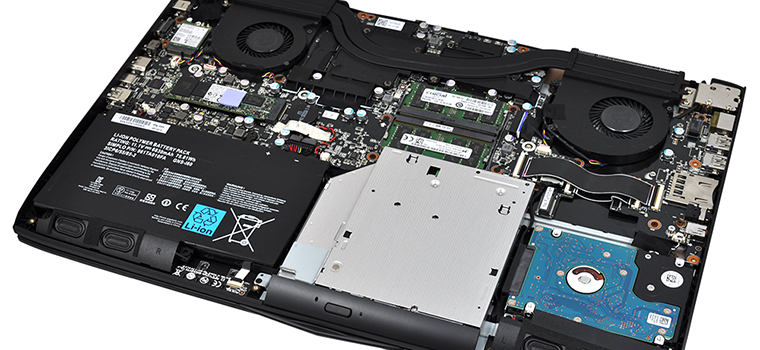Introduction
High-performance gaming laptops are no longer the preserve of die-hard PC enthusiasts. Whereas said machines were once big, bulky and at times ostentatious affairs, today's gaming laptops take a more refined approach while maintaining the requisite level of performance.
A good example of this evolution is Gigabyte's latest 17.3in powerhouse, the P57W. Back in the day, any laptop described as a powerhouse would be visualised as thick, chunky and downright ugly, but the P57W is anything but. Gigabyte's new machine measures a reasonable 24.9mm at its thickest point, it tips the scales at a hair under 3kg, and it has a finish that's equally well suited to a LAN party or an office meeting.
Granted, the orange trim along the edges won't be everyone's cup of tea, however it's a minor point on an otherwise clean design, and while we might have preferred silver highlights, gamers may appreciate the hint of flair. On the whole, the understated aesthetic works well, but while the laptop is suitably slim, portability isn't its forte. The near-3kg weight doesn't lend itself to frequent travel, and the 421mm width means you'll need a well-sized bag.
Build quality is decent throughout, with Gigabyte employing good-quality plastics, though there is a difference between the main body and the lid. The former is quite sturdy, with only a hint of flex in the keyboard tray, but the thin top bends a little too easily. The display hinges however offer the right amount of tension, and while the P57W doesn't offer Ultrabook levels of sophistication, it looks and feels tidy.
Opening the laptop reveals the ofttimes forgotten benefit of a 17.3in machine - a wonderfully spacious workspace that makes for an effective desktop replacement. It looks roomy and inviting, and the keyboard and trackpad seem familiar. That's because both are carried over from the recently reviewed P35X. The backlit keyboard, with anti-ghosting technology and integrated numpad, continues to exhibit a bit of flex and doesn't offer a great amount of key travel, but it's comfortable enough, well illuminated, and suited to both gaming and productivity.
The P57W trackpad is similarly expansive and responds well to multi-touch gestures, however it's a shame Gigabyte continues to adorn its laptops with unwanted stickers. We really don't need the specification to be on show at all times, and the 'two-year warranty' and 'made in Taiwan' badges in no way heighten the laptop's appeal. Of course, the laptop is sold in many countries, particularly in the Far East, where this kind of sticker fascination is expected.
High levels of polish aren't typically Gigabyte's speciality, but the manufacturer sure knows how to put together a specification sheet. On the outside, the P57W provides a trio of USB 3.0, USB 3.1 Type-C, HDMI 2.0, VGA, mini-DisplayPort, audio jacks, an SD card reader, Wireless AC and a connector for the bundled 180W power supply.
Forward-facing stereo speakers provide plenty of volume and acceptable clarity, and there's also a DVD writer accessible from the laptop's front edge. Should you prefer, the optical tray can be substituted for a storage device, and Gigabyte bundles the required converter.
There's plenty happening on the inside, too. The CPU is a high-end Intel Core i7-6700HQ with integrated HD 530 graphics. There's 16GB (2x8GB) of DDR4-2133 memory, and when the going gets tough, a dedicated GeForce GTX 970M GPU will kick in for added oomph. Gigabyte has all this channelled toward a 17.3in 1080p IPS display with wide viewing angles and an anti-glare coating that helps minimise reflections. It's a good panel, there's no doubt about that, yet we're surprised to find that an ultra-high-res option isn't yet available.
The P57W is high-end in certain areas but it doesn't necessarily push the boat out. Storage, for example, is provided by a 256GB LiteOn M.2 SSD and a 1TB hard disk. Not a bad combo by any means, but it's fairly basic by today's premium gaming laptop standards. Gigabyte's decision not to win every benchmark does bode well for the price tag, mind, which sits at a competitive £1,350.
Gigabyte has ticked a lot of the right boxes, yet there are recurring niggles regarding tidiness. The stickers on the palm rest are one, and the needless number of icons on the Windows 10 desktop are another. The software configuration isn't as clean as we'd like on a premium machine, and some of the pre-loaded utilities simply fail to function after updating to the latest version of Windows, resulting in errors on boot. The final question-mark is the optical drive, and more specifically whether or not it should be dropped in favour of a much larger battery? Answers in the comments section, please.













